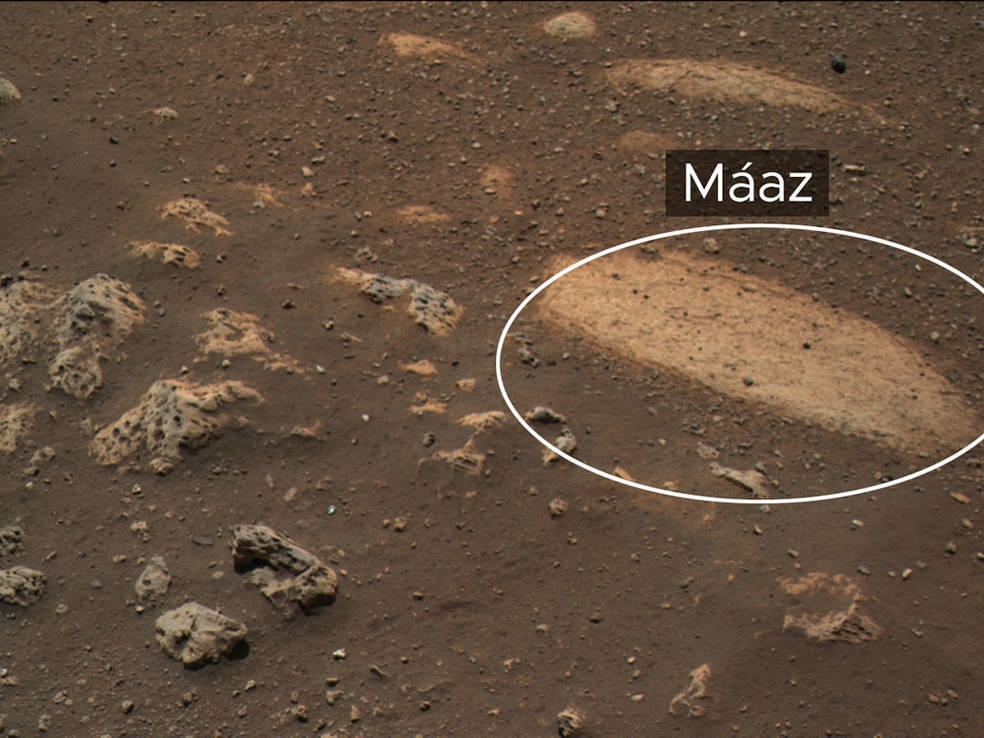Section Branding
Header Content
Mapping Máaz: NASA Uses Navajo Language to Name Features on Mars
Primary Content
One of the newest Martians, a NASA robot named Perseverance, has touched down, powered up, and gotten to work. Over the course of its mission, Perseverance will prowl around a small crater — the site of a possible ancient lake — and meander through what might be an old river delta, searching for biosignatures, or evidence of life.
But like anywhere new and remote, it's easy to get turned around on Mars. The landscape is vast and features can look really similar to one another, so the teams of scientists working on the mission needed to get on the same page about what is where.
That's where the Navajo language comes in. Although the International Astronomical Union assigns the official names for planetary features, surface mission teams use nicknames for smaller landmarks. The Perseverance team turned a Navajo engineer on the team, Aaron Yazzie of NASA's Jet Propulsion Laboratory in Southern California, to get permission from the Navajo Nation to use their language to name some points of interest.
The tribe was happy to collaborate. Before launch, the mission team divided the primary area into sections of about a square mile each. They then looked for national parks and preserves here on Earth that had a similar geology to the area on Mars, and named them accordingly. Perseverance touched down in Tséyi, which corresponds to the Navajo word for the Canyon de Chelly National Monument in Arizona, right in the heart of the Navajo Nation.
It's not the first time Navajo has been used by the U.S. government for ambitious projects. During World War II, some 400 Navajo speakers transmitted thousands of radio messages in a highly effective code based on their language: Fighter planes became hummingbirds, submarines became iron fish.
The language continues to be spoken by the Navajo tribes, a people who call themselves Diné, but it's dying out. "Having our Navajo language used in the Perseverance mission will inspire more young Navajo people to understand the significance of learning our language. Our words were used to help win World War II, and now we are helping to navigate and learn more about the planet Mars," Navajo Nation President Jonathan Nez said.
At the moment, Perseverance is working to learn more about a large rock named "Máaz" – Navajo for "Mars." It's just one of many landmarks that according to NASA, emerged from a list that included Tséwózí bee hazhmeezh," or "rolling rows of pebbles, like waves was one suggested landscape name." Yazzie says he added suggestions like "strength" ("bidziil") and "respect" ("hoł nilį́") to the list.
But learning a new language can be tricky, even for robots. Perserverence's computers don't understand accent marks, so scientists have had to adapt. Yazzie says that while they work hard to come up with translations that best resemble Navajo spellings, the team will use English letters without special characters or punctuation to represent Navajo words as they need them.
Copyright 2021 NPR. To see more, visit https://www.npr.org.

